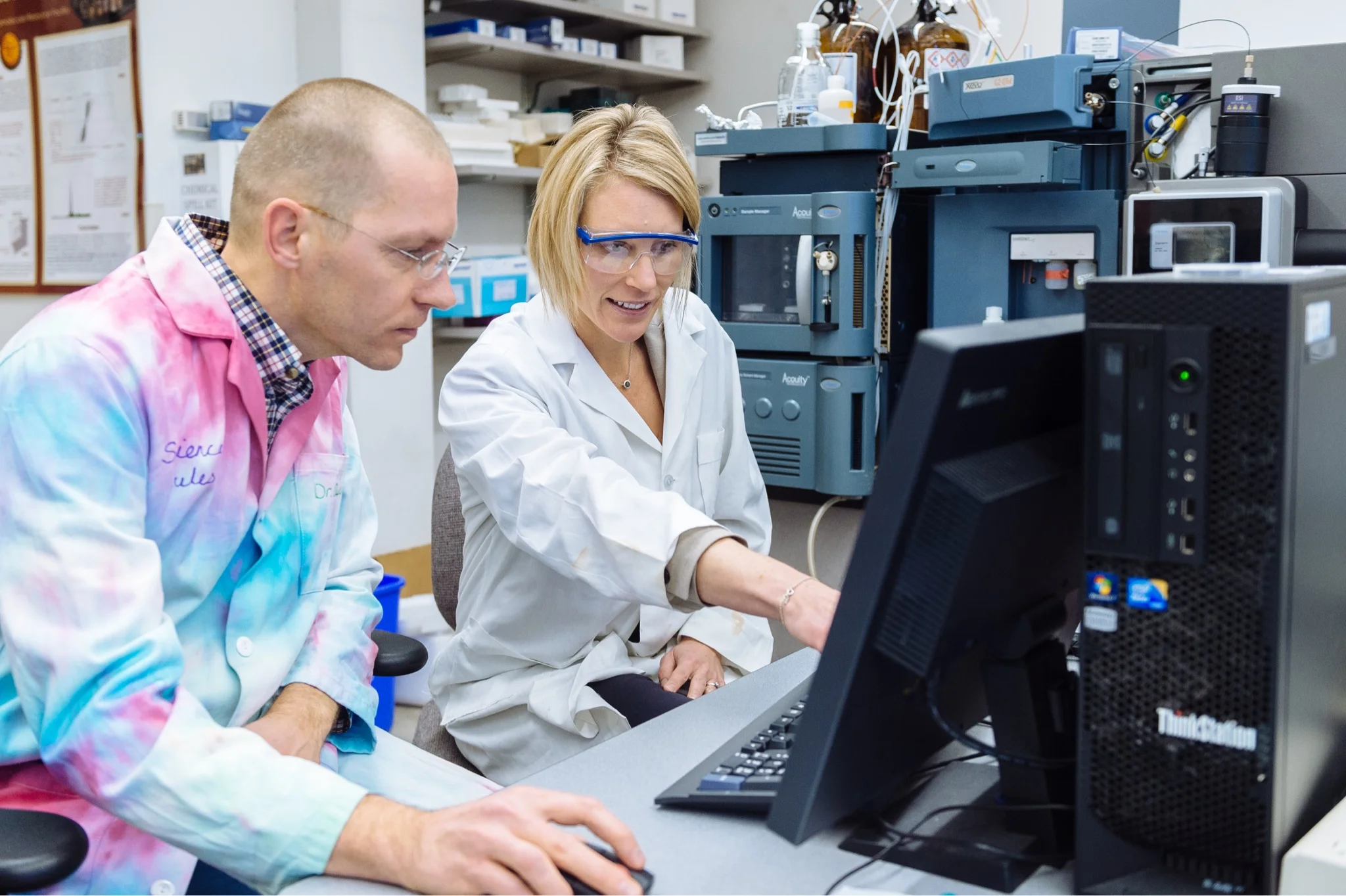This week on #meetascientist, get to know Dr. Jessica Prenni, Associate Professor and Director of Proteomics & Metabolomics Facility at Colorado State University. A few weeks ago, Jessica co-authored a study on gender diversity based on an analysis of the American Society for Mass Spectrometry's annual meeting, so we thought it'd be a great opportunity to share her findings and her story!
When did you first identify as a scientist? What sort of science do you focus on now? Any projects you're excited about?
As an undergraduate at Southern Oregon University, I had an amazing opportunity to work as a research intern at the National Wildlife Forensics Laboratory in Ashland, OR. I learned so much about how to work in a laboratory and think like a scientist. My mentor there, Dr. Ed Espinoza, played a huge role in framing my identification as a scientist. It was during this experience that I realized my capacity for science and started to build my confidence that I could succeed.
You just co-authored a paper in the Journal of The American Society for Mass Spectrometry around gender diversity. What was the motivation to take a deep dive into the gender dynamics of a scientific society and what were your findings?
I have attended the annual conference for the American Society for Mass Spectrometry for many years and have always felt a slight disadvantage as a woman in the field. I would notice that keynote speakers and high profile awards were continuously dominated by males and, even now, I struggle to think of more than a handful of highly recognized female leaders in the field. A big part of this conference is also wrapped up in the evening social activities, which are sponsored by the mass spectrometry vendors. These are great venues for networking and also, I will admit, are lots of fun. A couple of years ago, during one of the social activities, a particular vendor was having a celebration where they were highlighting leaders in our field who had made significant contributions to the advancement of a particular technology. The leaders that they chose to highlight were exclusively male. To add to the festivities, the vendor decided it would be fun to have girls dancing with hula-hoops (to mimic ion trajectories) and other girls throwing t-shirts to the crowd of slightly inebriated scientists. While this was all meant in good fun, it struck a significant cord with me. It motivated conversations on the topic of gender diversity in our society.
The study itself was actually spearheaded by a Ph.D. student at the University of Wisconsin Madison, Evgenia Shishkova. The results of the study were limited because the society did not collect any demographic data from its members – thus all gender assignments had to be inferred from first names. Overall the results showed us that there was a significant bias towards males for invited keynote lectures, plenary speakers, and recipients of Senior Investigator awards. The proportion of females among the mid-career and young investigator awards and oral session chairs resembled the current gender distribution of the membership which is ~70:30, male:female. We also found some significant trends in gender distribution among session topics that mimic the biology-technology line that is somewhat typical of STEM disciplines. For example, sessions that focused on instrumentation development or computational approaches tended to be enriched for males while sessions that focused on biological applications tended to be more enriched for females.
I should also say that the vendor mentioned above was very receptive to our disapproval of their event. Our “speaking up” prompted them to modify the event for the remainder of the conference. Furthermore, a few months after the conference they held a special town hall style meeting for their entire company on the topic of gender diversity. Another female mass spectrometrist and myself were invited to talk and participate in those panel discussions.
What were some ideas or interesting discussions that resulted from undertaking this study? How did having co-authors who were men change the conversation?
Having male co-authors on the study was a huge advantage. As a team, we were able to look at the results from different perspectives, which ultimately resulted in a fair and unbiased interpretation of the data. As a woman, it is very difficult to look at data like this and try to interpret it without imparting bias from your own experiences. The corresponding author of the study was my colleague Dr. Josh Coon from the University of Wisconsin and his team (lead by Evgenia) really drove the data analysis and interpretation. Josh is a phenomenal scientist and a very well-known and respected leader in the field of mass spectrometry. He is also a wonderful person who recognizes there are challenges faced by his women colleagues and his students and post-docs and he wants to be an active part of the solution for making this better.
How did you get involved with 500 Women Scientists? What do you hope to bring to the group, and what do you hope to take away?
I was introduced and invited to 500 Women Scientists by my colleague Dr. Jessica Metcalf at Colorado State University. I hope that I can bring a strong voice and act as a role model for younger women moving through their scientific careers.
When you're not in the lab or analyzing gender dynamics at conferences, what do you do to unwind?
I have a whole other job! Being a mom of three active kids takes up a lot of my time. I am grateful to have an awesome partner in my husband to share this work but I still spend a crazy amount of time in the car driving to and from sport practices! As a family, we are all avid skiers and spend most winter weekends in the beautiful mountains of Colorado. I also spend a lot of time running and doing crossfit throughout the year – to keep myself in shape for ski season.
Dr. Jessica Prenni is trained as an Analytical Chemist and has been working in the field of biological mass spectrometry for over 15 years. The research in her group focuses on analytical and informatics method development for proteomics and metabolomics studies. Additionally, her group operates as a collaborative service center working with almost 200 researchers every year supporting a wide variety of applications ranging from basic biochemistry to human and veterinary clinical studies to agriculture and food improvement. Dr. Prenni is also a mother of three awesome kids and an avid downhill skier and runner.


![copper_mountain_with_grace[1].jpg](https://images.squarespace-cdn.com/content/v1/582cce42bebafbfc47a82b04/1507567066521-WYNYPYASMD79Z6ZCUN7Z/copper_mountain_with_grace%5B1%5D.jpg)
![Prenni_website2[1].jpg](https://images.squarespace-cdn.com/content/v1/582cce42bebafbfc47a82b04/1507567015961-HJ0XNGZIVS6EHSFEMWLC/Prenni_website2%5B1%5D.jpg)